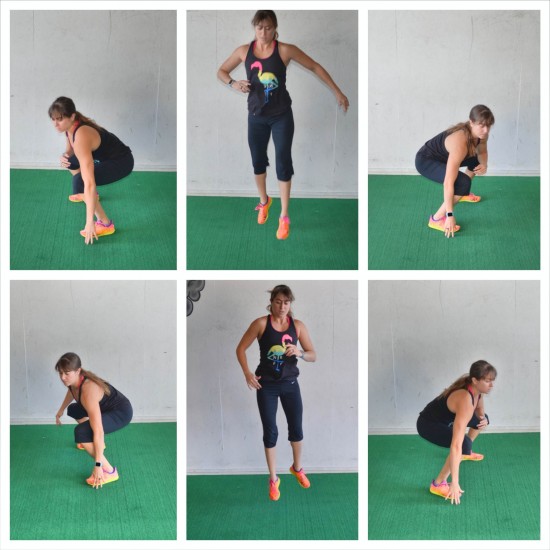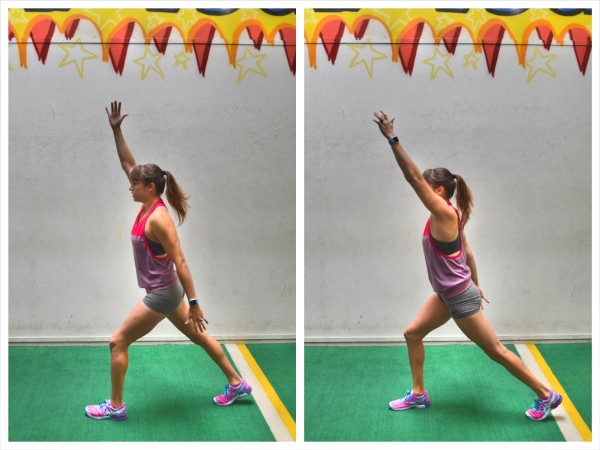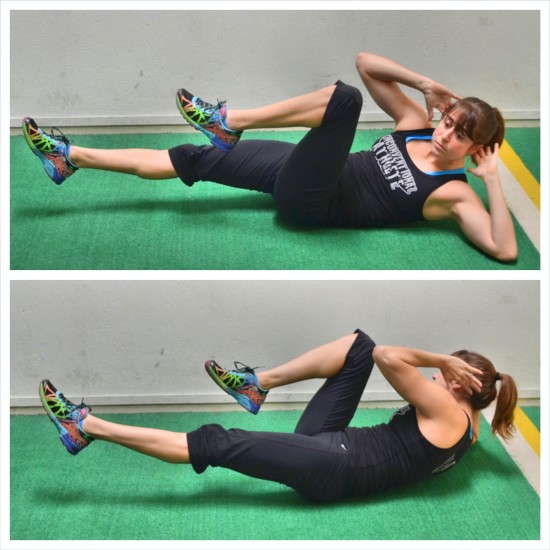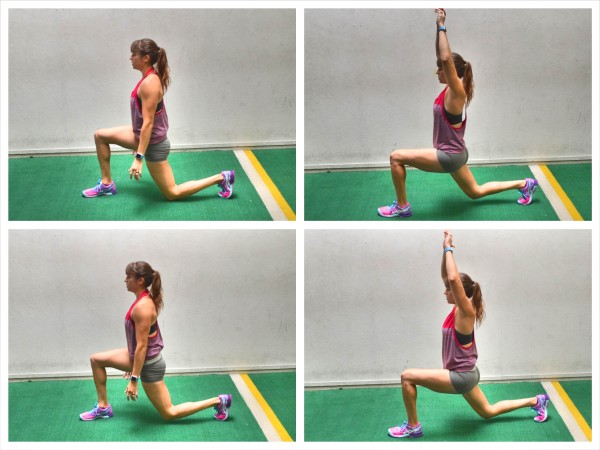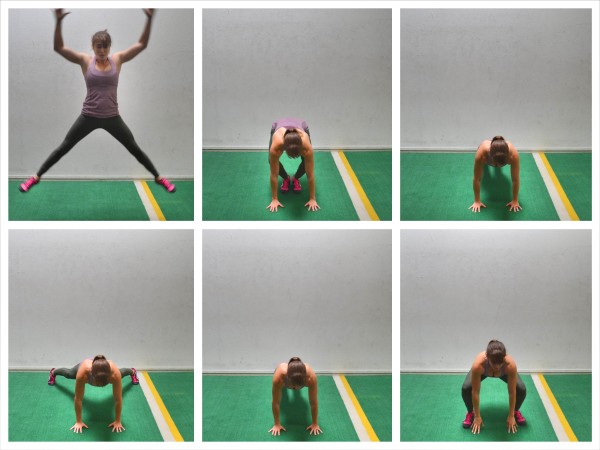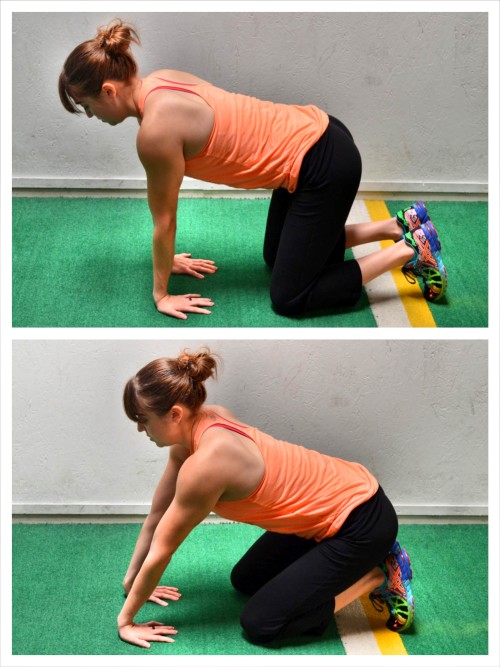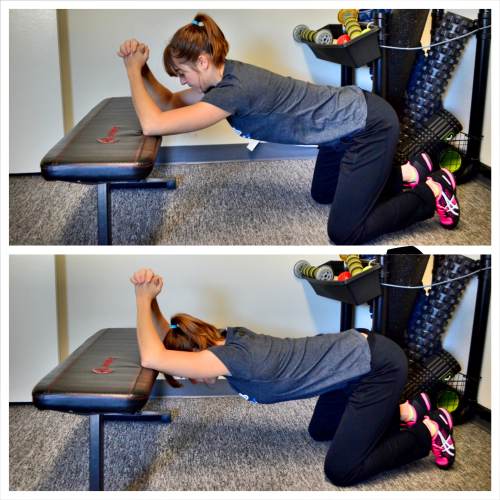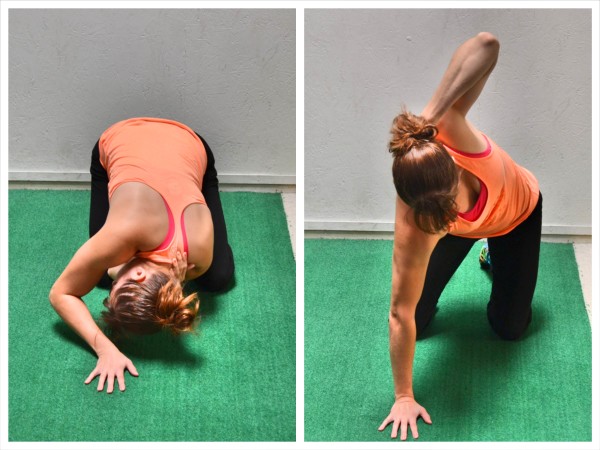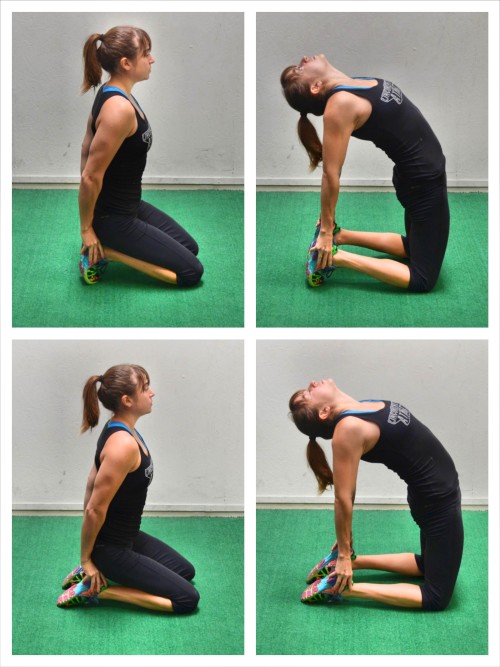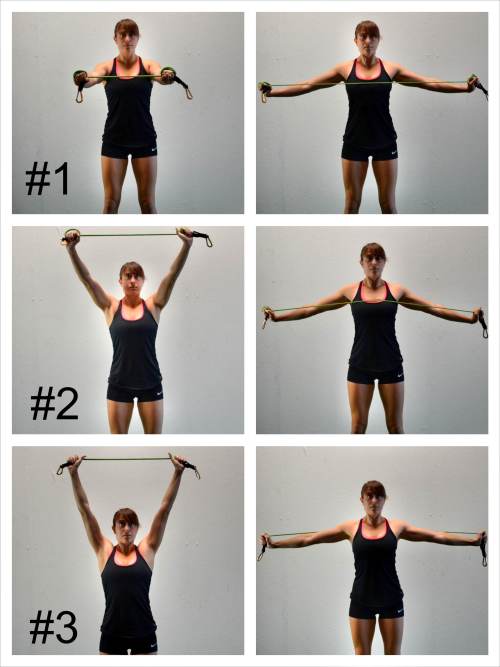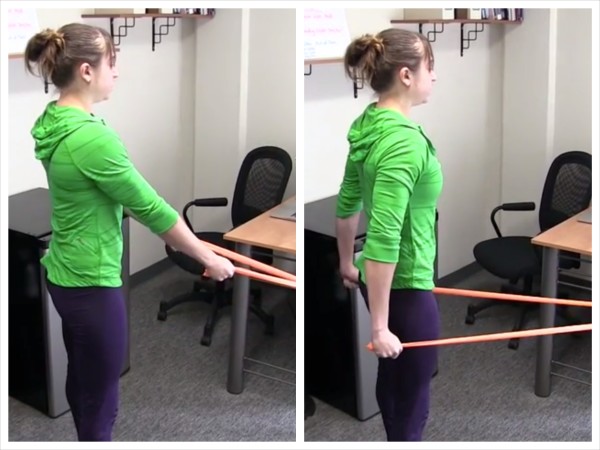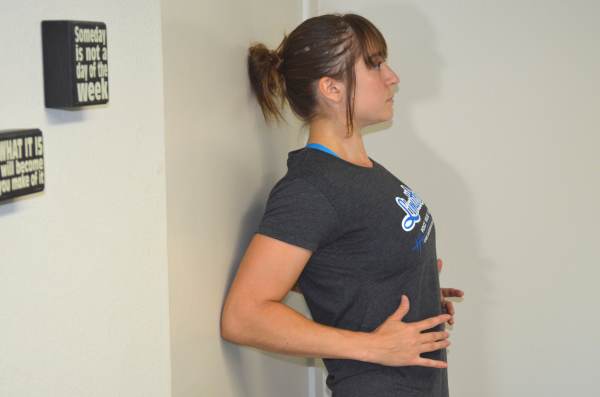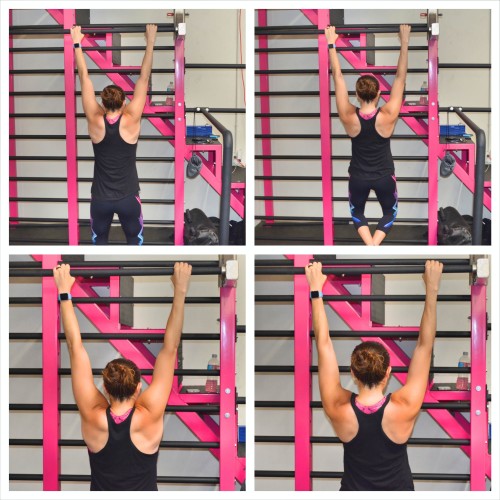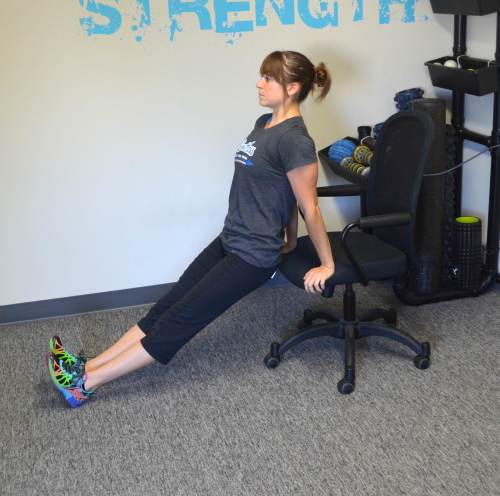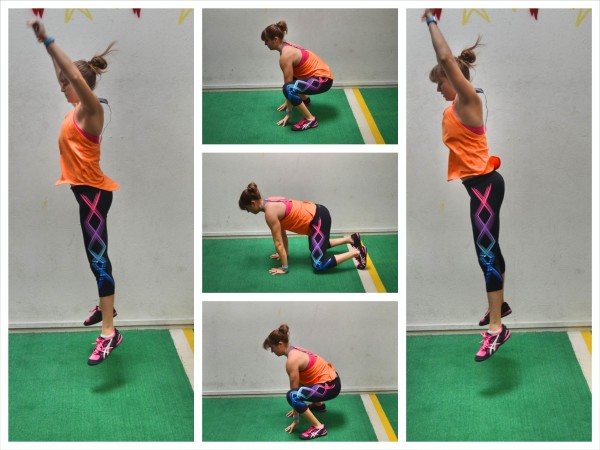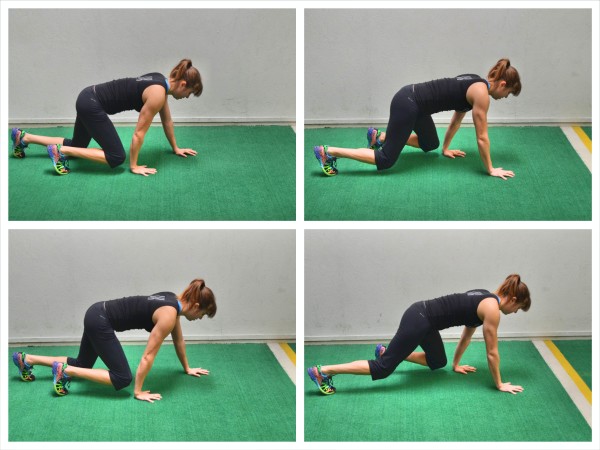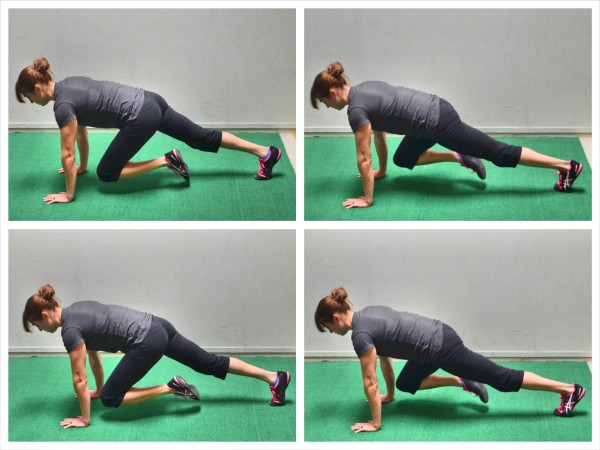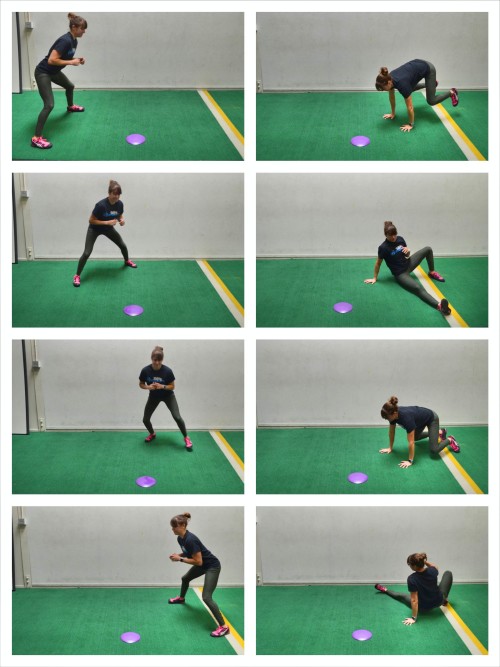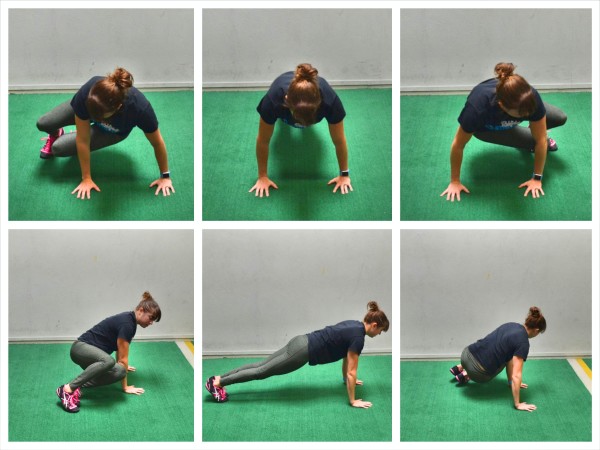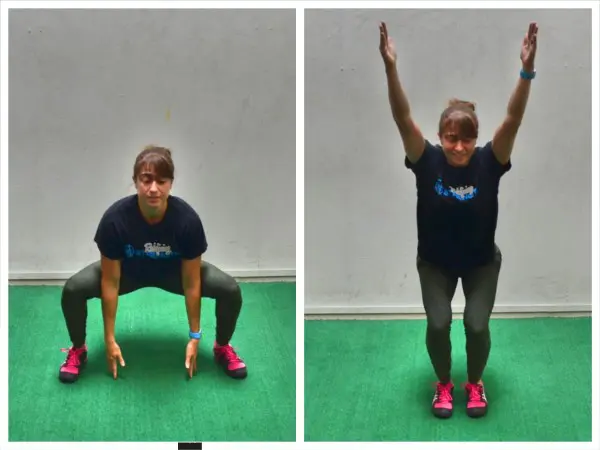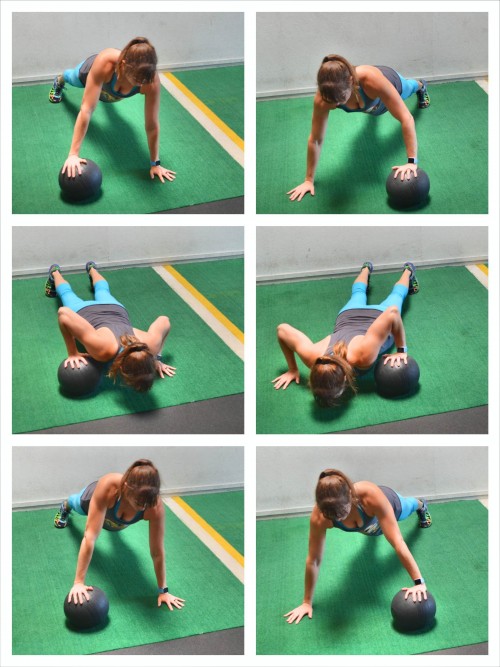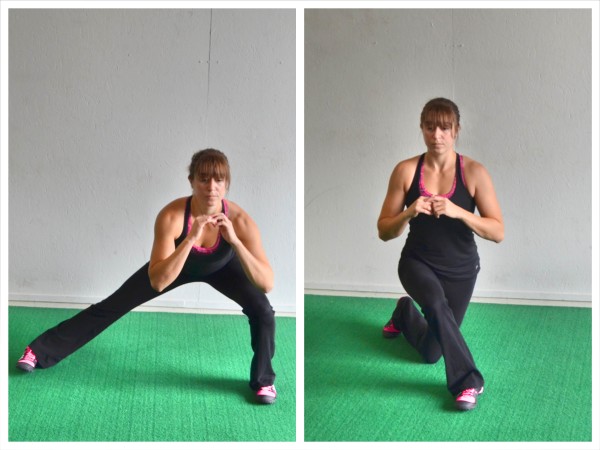
Lunge For A Stronger Core And Legs
WARM UP
Stretch and Roll Out:
Calves
Hamstrings
Quads
Hips/Glutes
Chest
Back
WORKOUT
Complete 3-5 rounds of the first exercise, resting up to 90 seconds between rounds. Then rest 1-2 minutes and move on to the circuits. Complete 3-5 rounds of each circuit, resting as necessary.
EXERCISE:
3-5 reps per side 7-lunge Lunge Matrix
CIRCUIT #1:
8-12 reps per side Front to Back Lunge
10-15 reps Inverted Rows
15-20 reps Reverse Hypers
3-5 reps per side Halos
CIRCUIT #2:
8-12 reps per side Side to Curtsy Lunge
8-12 reps per side Single Arm Dumbbell Row
8-12 reps per side Low to High Chopper
50ft Down and Back Overhead Carry
COOL DOWN
Stretch and Roll Out:
Calves
Hamstrings
Quads
Hips/Glutes
Chest
Back
NOTES:
Try to add weight to the Lunge Matrix as you go. With the halos, focus on a bigger range of motion instead of going heavier. Don’t worry about moving quickly with this workout. Focus more on challenging yourself with weight and variations. However, don’t try to rest a ton if you don’t need it.
EXERCISE DESCRIPTIONS:
7-lunge Lunge Matrix – All 7 lunges equal one rep. So 3-5 reps is really 21 to 35 lunges.
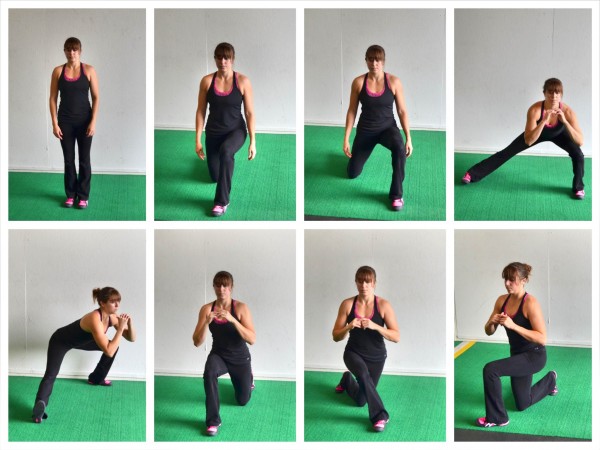
- Front Lunge: Step the left foot forward and sink down into a front lunge. Bend both the front and back knees. Make sure you do not lean forward as you lunge forward. Also make sure you drive off your front heel to push back to standing.
- Angled Front Lunge: After returning to standing after the front lunge, you will again lunge forward, but this time out at an angle. Lunge forward toward “11″ on the clock with your left foot. Bend both your back and front knees as you lunge forward, keeping both toes pointing straight ahead. Then drive off your left heel to come back to standing.
- Side Lunge: Again lunging with the left foot, step the left foot out toward “9″ on the clock. As you lunge out to the side, you are going to bend the left knee and sit your butt back. Keep your right leg straight. Both toes should be pointing straight ahead. Keep your leftt heel down as you sink into the lunge. Push your butt back and keep your chest up. Then drive back up to standing.
- Backward Rotational Lunge: Next you will lunge back toward “7″ on the clock with your left foot. Your left foot, when you step back, will be perpendicular to your right foot, which is pointing toward “12.” Push your butt back and sink into a lunge, bending the left knee while keeping the right leg straight. Do not let the left heel come up. Keep your chest up and sit your butt backward. Driving off your left heel, push back to standing. Make sure that your right toe doesn’t rotate but continues to point toward “12.” Also make sure your right leg does not bend.
- Reverse Lunge: Lunge straight back with your left foot. Bend your front knee as you step your back leg back and drop your back knee down toward the ground. You want to lunge back as if moving to half kneel on the ground. Keep your chest up nice and tall and sit back in your front heel as you lunge back. Then drive back through your front heel to come back up to standing.
- Curtsy Lunge: Take your left foot and step your left foot back behind your right leg. You will reach your left foot back to about “5″ on the clock. Make sure you step far enough back (do not keep your left foot too close to your right) that you can bend both knees and sink down into a deep lunge. Keep your right heel down on the ground and your chest up. Then come back to standing. Make sure that you feel this lunge in the outside of your right butt cheek when you lunge back with the left leg.
- Forward Cross Lunge: Lunge forward and across toward about “2″ on the clock with your left foot. Pivot your left foot so that your feet are perpendicular. Sink down into a lunge, bending both knees. Make sure your left heel stays down as you lunge. Then drive off your left heel to come back to standing.
Front to Back Lunge – Start standing tall then lunge forward on one side. Bend your knees as you sink down. Try to get your front knee bent to about 90 degrees with your knee over your ankle. Drop your back knee down toward the ground as you keep your chest up. Then drive back through your front heel to come back up to standing. Then step back into a backward lunge, lunging back with the same leg.
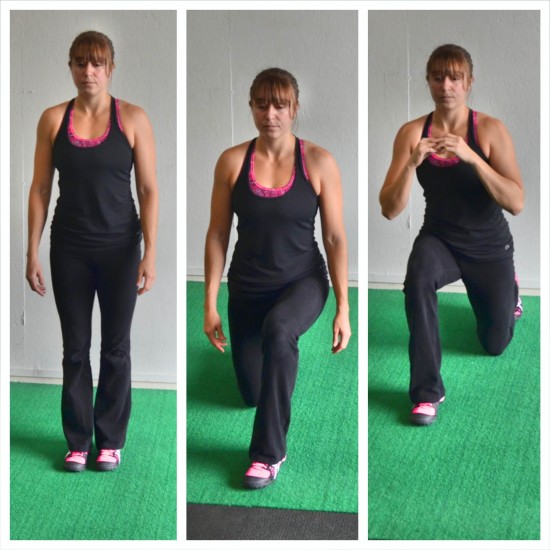
Inverted Rows – To do the Inverted Row, you can either use a Suspension Trainer or a Bar. Using a Suspension Trainer, hold a handle in each hand with your palms facing in. Walk your feet forward so that your body is at an incline. The closer to parallel to the ground you get, the harder the move will be. Hang from the straps with your body in a nice straight line and your chest pressed out. Engage your core and glutes and keep your legs straight. You want a nice straight line from your head to your heels. Do not let your low back arch or your hips sag toward the ground. Then drive your elbows down and back to row your chest up to the handles. Keep your body in a nice straight line as you row up and do not bounce off the bottom. Keep your wrists straight as you row up. Also, do not shrug your shoulders. Then lower back down. Do not lose tension at the bottom. Make sure to keep the chest pressed out and your body in a nice straight line. Do not swing to row back up. Make sure to feel your back and arms working to row and not just your arms. Focus on feeling your back pull.
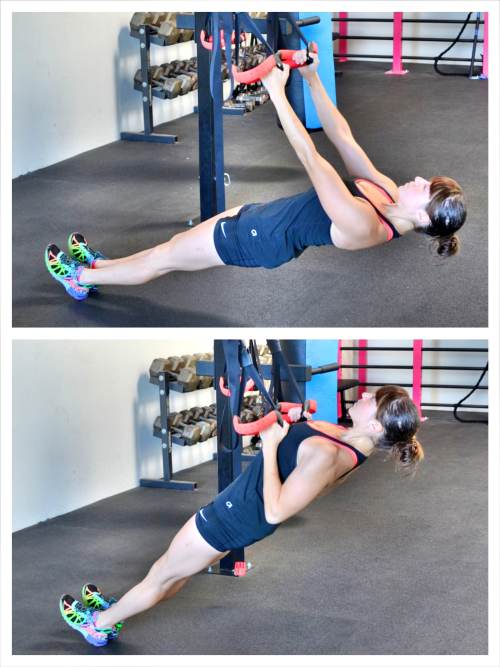
Reverse Hypers – To do Bent-Knee Reverse Hypers, (shown in the bottom two photos), lie face down on a bench, box or table with your hips right on the edge of the bench. Hold on to the bench or something in front of you, but make sure it doesn’t make you stretch or tense up your neck and shoulders. Make sure your hips are right about at the edge of the bench. If your hips are too far on the bench, you are more likely to hyperextend your low back in an attempt to get your hips up higher. However, having your hips too far off the bench, will also force you to have to lift more bodyweight and could cause you to engage and use your low back to lift. Keep your legs close together or even place your heels together and turn your toes out to help you engage your glutes. Bend your knees to almost 90 degrees and flex your feet. Then, with your knees bent, kick your heels up toward the ceiling, squeezing your glutes as you press your hips down into the bench. You can slightly drive up and out as you lift to really get your glutes to work. Make sure that you squeeze your glutes as you lift and don’t hyperextend your low back just to get up higher. You also want to make sure to drive your hips and pubic bone down into the bench as you lift to make sure you are extending your hips and using your glutes. Lift so that your quads are about parallel to the ground and lower back down. Only lift higher if you don’t feel your lower back taking over. The range of motion isn’t as important as simply getting your glutes engaged and working. Consciously squeeze your glutes at the top and then lower down. You can even slow down the tempo of this move and add in a longer pause at the top to make your glutes work harder. To do a Straight-Leg Reverse Hyper (shown in the top photos), you will set up with your hips on the edge of a bench just like you did with the Bent-Knee Variation. However, instead of bending your knees, you will keep your legs out straight. Start with your feet touching the ground and your legs close together. You can place your heels together and turn your toes out if you struggle to get your glutes to engage and work during the movement. Then, keeping your legs straight, drive your hips down into the bench as you lift your heels up toward the ceiling. Squeeze your glutes as you lift and extend your hips. Lift till your legs are about parallel to the ground and then lower back down. Only lift higher if you don’t feel your lower back taking over. You want to focus on your glutes working to lift not your low back. If you do feel your low back, make sure you are pressing your pelvic down into the bench as you squeeze your glutes to lift. Make sure that you are also consciously engaging and contracting your glutes at the top of the lift. Hold at the top then lower back down and repeat. Pause longer at the top to make the move more challenging.

Halos – To do Halos, stand with your feet no wider than hip-width apart. Stand with your feet closer together to make the move harder on your core. Hold a kettelbell upside down with one hand on each side close to where the handle attaches to the bell (you can also use a plate weight or dumbbell if you don’t have a kettlebell). Then raise the weight up so that it is in front of your face with your elbows down toward the ground. Stand tall with your shoulders down and back. Squeeze your glutes and brace your core as you begin to circle the bell around your head. Bring the bell back and around your head to the right, pointing the bottom of the kettlebell back behind you as you circle it around the side of your head. Then drop it down behind your head, reach the bottom of the kettlebell down between your shoulder blades as your elbows rotate to point up toward the ceiling. As you circle the kettlebell back and reach down between your shoulder blades, keep your core tight and don’t let your hips wiggle. Also, do not tuck your chin or move your head. You want to circle the kettlebell around as your head stays still. Continue the circle and bring it around the other side, handles leading, and back in front of your face. Then switch the direction of your circle and go back the way you just came. Keep alternating directions until all reps are complete. Do not tuck your chin or bob your head as you circle. Brace your abs and glutes so that you don’t rotate your hips as you circle and instead get all of the mobility from your shoulders and not your hips. Bracing your core will also protect your low back. Only the kettlebell is moving.

Side to Curtsy Lunge – Lunging with the left foot, step the left foot out toward “9″ on the clock. As you lunge out to the side, you are going to bend the left knee and sit your butt back. Keep your right leg straight. Both toes should be pointing straight ahead. Keep your left heel down as you sink into the lunge. Push your butt back and keep your chest up. Then drive back up to standing. If you need to, touch your foot down before moving into the Curtsy Lunge. If you don’t need to, move right into the Curtsy Lunge. After performing the Side Lunge, stand up and lunge back into a Curtsy Lunge with your left foot. Step your left foot back behind your right leg. You will reach your left foot back to about “5″ on the clock. Make sure you step far enough back (do not keep your left foot too close to your right) that you can bend both knees and sink down into a deep lunge. Keep your right heel down on the ground and your chest up. Then come back to standing. Make sure that you feel this lunge in the outside of your right butt cheek when you lunge back with the left leg. Then move back into a Side Lunge and repeat on the same side.

Single Arm Dumbbell Row – To do the Single-Arm Dumbbell Row, set up with one knee and hand on a bench or box. If you are going to be rowing on your right side, your left knee and hand will be on the bench. Press your chest out and feel the muscles of your back activate. You want your back to stay nice and flat as you row. Hold the dumbbell in your right hand with your right foot on the ground. Keeping your back flat, row the dumbbell up to your side. Drive your elbow up and back as you row and do not let your shoulder shrug. Feel the right side of your back working to row the dumbbell up. Do not row the weight up to your neck. Bring it in to your side at, or just below, chest height. Do not rotate a lot or swing to lift the weight. Once you’ve rowed the weight up, extend your arm all the way back down. Do not reach past full extension to try to drop the weight closer to the ground. You do not want to relax your back at the bottom of the row. Complete all reps on one side before switching. Slow down the tempo or add more weight to make the move more challenging.
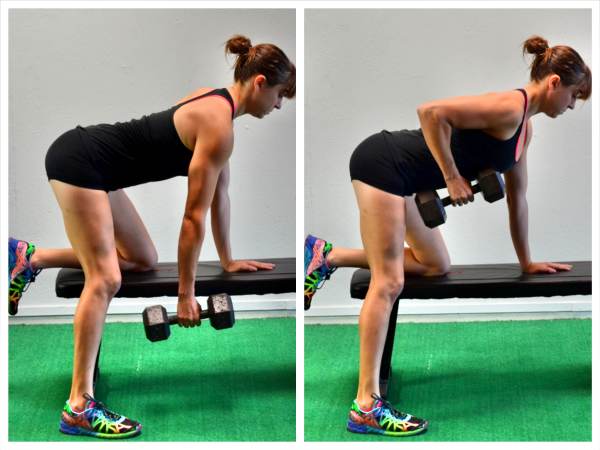
Low to High Chopper – Place a band around a low anchor point. Grab the handle of the band in both hands and stand with your feet about shoulder-width apart. Your side will be to the anchor point. Step away from the anchor point so that there is tension in the band even at the end range of motion. Then pivot your feet and bend your knees to reach the handle down outside the knee closest to the anchor point. Your arms should be straight and your chest should be up and there should be tension on the band. Do not round your back to reach lower. Bend your knees and bring the hands outside your knee. Then bring your arms and the band up and across your body as you stand up and pivot toward the opposite shoulder. You should end reaching the other way with your arms reaching up and out at about shoulder height. Do not reach to high up as you reach across. Then control the band back down and across as you pivot and bend your knees. Move in a slow and controlled fashion back down. Do not let the band pull you. Complete all reps to one side before switching.
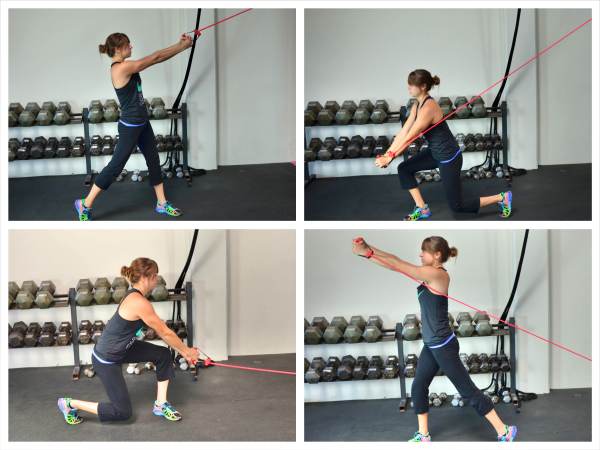
Overhead Carry – To do a Unilateral Overhead Carry, take one kettlebell and place your hand through the handle so that you can rest the kettlebell on the back of your forearm. If the kettelbell bothers you or you don’t have one, you can use a dumbbell instead. Press the weight up toward the ceiling, straightening your arm up so that your bicep is by your ear. Do not arch your low back or let your elbow bend as you hold the weight overhead. Keep your core tight and your arm up straight toward the ceiling and do not lean to either side or shrug your shoulders. Then, keeping the weight stable overhead, walk around for the allotted distance or time. Then switch the bell to the other hand. Make sure you keep the arm straight overhead and that you don’t feel it in your low back. If you can’t get your arm up overhead and you feel your neck and upper trap really taking over, try a Farmer’s Walk or Bottoms Up Carry.



